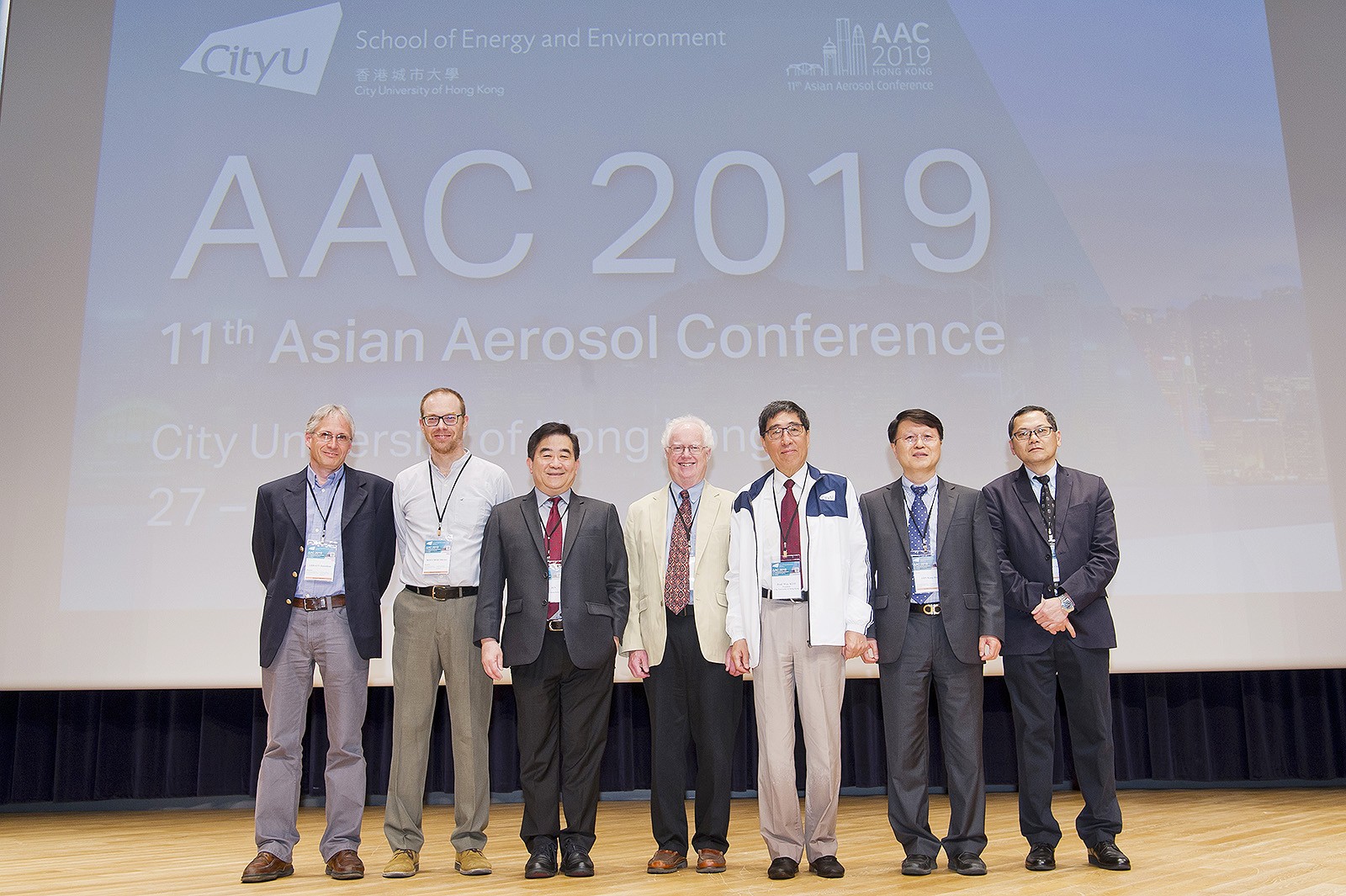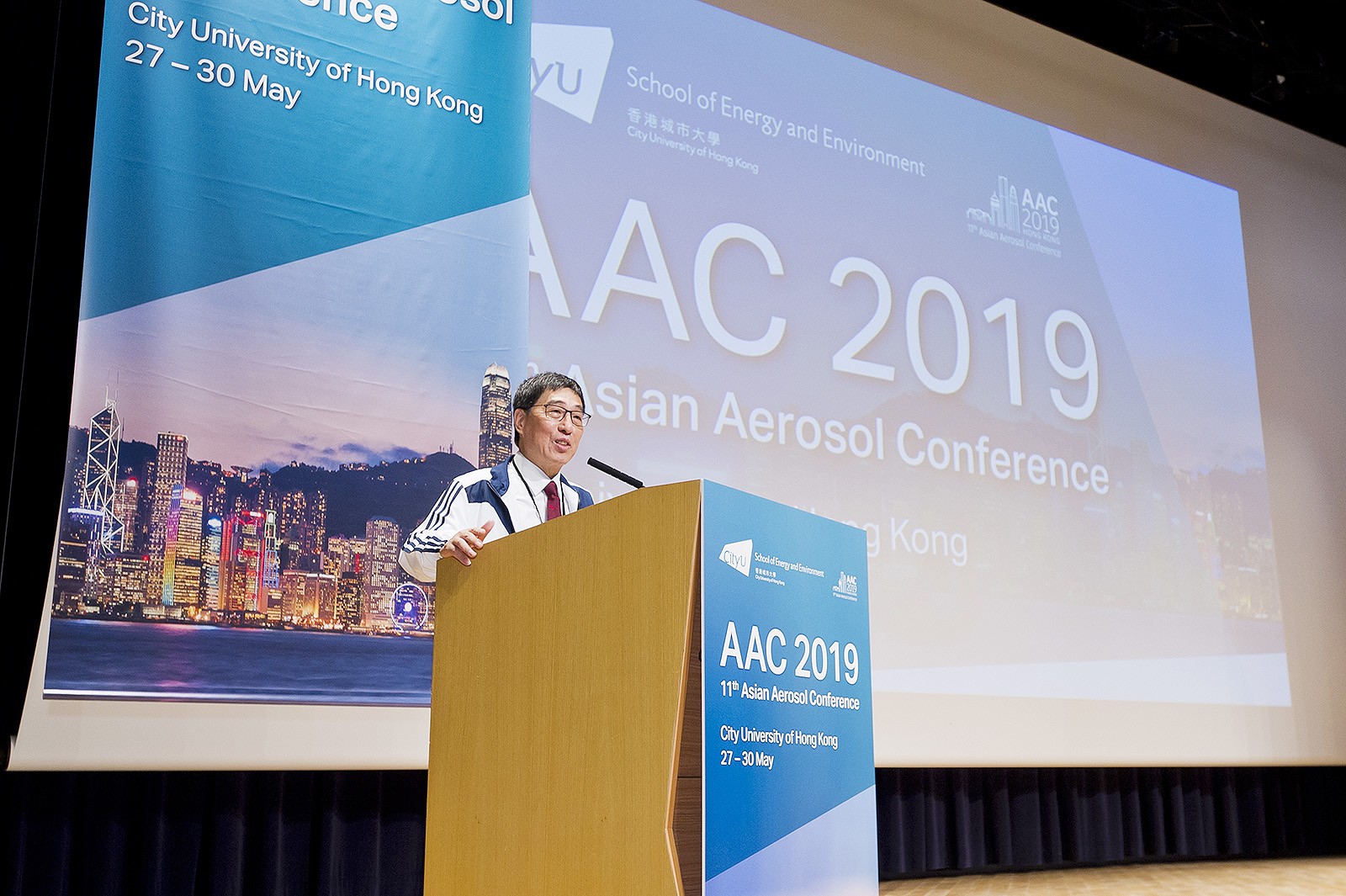
Aerosol science and technology is the focus of a major international conference that coincides with the 10th anniversary of the School of Energy and Environment (SEE) at City University of Hong Kong (CityU).
SEE and the Asian Aerosol Research Assembly (AARA) are organising the 11th Asian Aerosol Conference 2019 (AAC) from 28 to 30 May.
Around 600 delegates from more than 20 countries and areas will exchange ideas on topics such as aerosol chemistry, aerosol exposure and health, aerosol instrumentation, aerosol modelling, aerosol physics, aerosol-climate-meteorology, bio aerosols, emission inventories, filter and control technology and indoor air at plenary lectures, symposia, oral sessions, and 18 exhibitions showing advanced aerosol instruments.
Officiating at the opening ceremony were Professor Way Kuo, CityU President; Professor Alex Jen Kwan-yue, CityU Provost; Professor Ahn Kang-ho, President of AARA; and Professor Chan Chak-keung, AAC Conference Chair and Dean of SEE.
“Aerosol science and technology are well connected to scientific advances in nanotechnology and environmental research, such as climate change and air pollution,” Professor Kuo said.
“Hong Kong has become a research hub and technology centre as scientists, engineers and environmentalists join hands in finding cross-disciplinary solutions to these problems. As a response to global challenges, CityU regards one health, digital society and smart city as its three overarching themes in its current strategic plan,” he said.
Aligned with the objectives and goals of CityU, SEE is one of the few leading schools of its kind in Asia that pursues interdisciplinary research and offers educational training on a broad spectrum of issues pertinent to climate science, energy and sustainability.
Professor Ahn said AAC fostered technical exchange and international cooperation on aerosol issues related to the environment, One Health and climate change. “I hope the academic research and discussion at this conference will ensure continued cooperation among Asian countries even after the conference is over,” he said.
One of the focuses of the conference at the first plenary is the ideal aerosol measurement, which is delivered by Professor Richard C Flagan from the Division of Chemistry and Chemical Engineering, California Institute of Technology. Experts discuss the progress, challenges and different aspects of ideal measurement.
The impact of atmospheric aerosols on the climate and numerical weather prediction is discussed in the second plenary delivered by Dr Oliver Boucher, CNRS Senior Research Scientist of Institut Pierre-Simon Laplace, Paris. It reviews progress in quantifying the effects of atmospheric aerosols on climate and the challenges facing the aerosol research community.
Professor Jonathan Abbatt from the Department of Chemistry, University of Toronto, will give a talk on multiphase chemistry in the indoor environment in the third plenary. Reaction systems such as ozone reactions with skin and cooking oils, and the process controlling the indoor abundance of nitrous acid (HONO) are addressed specifically in the talk.
AAC has been held biannually since 1999 under the auspices of AARA. It is one of the premier events for researchers and professionals in Asia in aerosol science and engineering. Previous conferences were held in Jeju, Kanazawa, Sydney, Xi’an, Bangkok, Kaohsiung, Mumbai, Hong Kong, Seoul and Nagoya.






